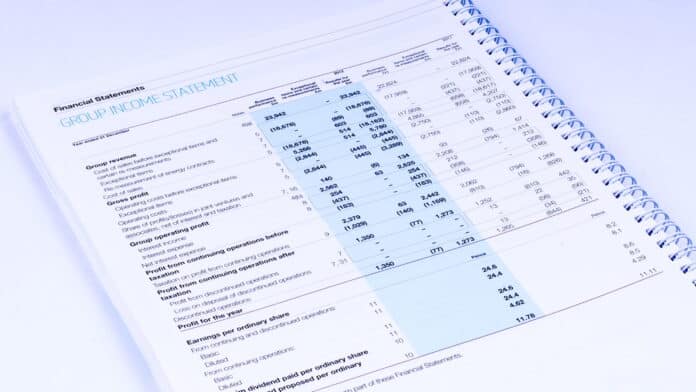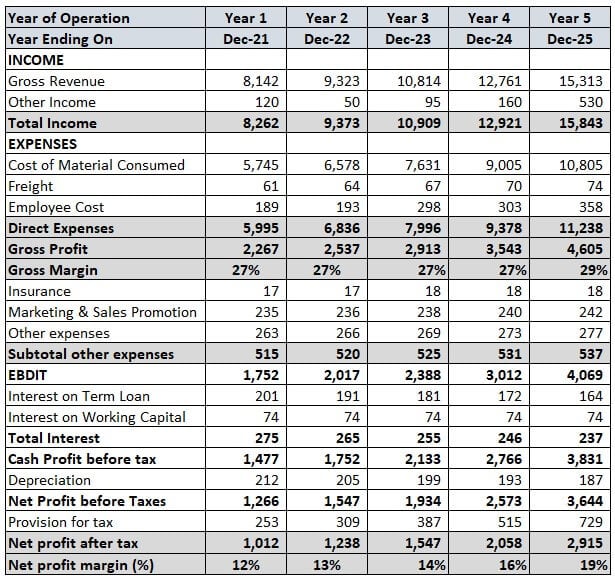The term “Top Line” refers to a company’s total revenue or sales before any expenses or deductions. It is called such because it appears at the top of a company’s income statement. Additionally, it is often seen as an important indicator of a company’s financial performance. This term also known as revenue, sales, or gross income.
The income statement’s top line displays a company’s total revenue from product or service sales within a specific time frame. This figure serves as a starting point, representing the full sales price before expenses or losses are subtracted.
Table of Content:
Table of Content
Getting to Know the Top Line
For businesses, understanding the Top Line is crucial because it represents the revenue generated from the core business activities. The top of a company’s income statement presents the total revenue earned from selling its products or services, providing an indication of its success in generating revenue.
It can also be used as a benchmark for measuring a company’s growth and success over time. A consistently increasing top line indicates business growth and expanding customer base, a positive sign for investors and stakeholders.
In addition to measuring a company’s financial performance. Gross income can even be used to assess the effectiveness of a company’s sales and marketing strategies. By analyzing the revenue data, businesses can identify which products or services are the most profitable, and which markets or customer segments are driving the most revenue.
Moreover, staying updated with market trends and leveraging technology can give you a competitive edge. With a solid grasp of your top line and its drivers, you can confidently explore new opportunities and make strategic investments, ultimately paving the way for scaling your business.
Also Read: Reasons to Use Cloud Accounting for Your Business
The Value of the Top Line
The top line is one of the most valuable figures in a company’s financial reporting. It explains the amount of business a company produces during a specific time frame and indicates the actual interest in the company’s goods or services.
It is an indicator of a company’s growth, as it shows whether a business is increasing its sales of goods or services over time. If the revenue is increasing, it indicates positive growth, but if the growth is not meeting expectations, it signals that the company needs to make changes. These changes may include adjustments to the marketing strategy, product quality, pricing, or customer engagement to improve revenue growth.
On the other hand, if the top line is stagnating or declining, it may signal to investors that the company is struggling to generate revenue and may not be a good investment opportunity. Therefore, it is crucial for businesses to monitor their top line closely and take appropriate actions to ensure sustainable growth and profitability.
How to Calculate and Analyze the Top Line?
The Top Line, also known as revenue, is a key financial metric that reflects a company’s total sales during a specific period. To calculate the top line, businesses need to add up all the revenue generated from sales of goods or services during a specific period. Therefore, if a company’s revenue for the year was $1 million, its Top Line would be $1 million.
Here’s an example to illustrate:
From this income statement, the Top Line can be calculated as follows:
Explanation:
- The top line of the entity is only “Gross Revenue” and not the “total income.” Other income may include rebates earned from suppliers, interest income on fixed deposits, and write-back provisions.
- Sales are increasing as the capacity utilization of the plant capacity is increasing. Also, the selling pricing per unit is increasing consistently.
- The Bottom Line (net profit) is increasing as reflected in the growth in net profit margin over the years.
- The company dedicates a significant portion of its cost to employee and marketing expenses. Furthermore, the cash profit is also increasing in line with the top line.
Why Top Line Matters?
Many people see revenue growth as a critical sign of a company’s triumph and potential for future profitability. It is crucial in determining its overall financial health and ability to invest in growth opportunities. Here are a few other reasons why Top Line matters:
Indicates the company’s market position
A company’s revenue growth can be a sign of its market position and success in meeting customer needs. If a company’s revenue is growing faster than its competitors, it could indicate that the company is gaining market share and outperforming its peers.
Enables investment in growth opportunities
A strong top-line can provide a company with the resources it needs to invest in growth opportunities, such as expanding into new markets, developing new products, or acquiring other businesses. Without a strong top line, a company may struggle to finance these initiatives and miss out on potential growth opportunities.
Attract investors
Investors often look at a company’s revenue growth as a key indicator of its future prospects. Investors are likely to view a company with a strong top line and a track record of revenue growth more favorably than one with stagnant or declining revenue.
Supports profitability
While a strong top line doesn’t guarantee profitability, it can certainly help. A company with a growing revenue may be able to achieve economies of scale, negotiate better supplier deals, or improve pricing power, all of which can contribute to higher profit margins.
Top Line vs Bottom Line
The top line represents the total revenue generated during a given period, without accounting for any costs or expenses. In contrast, the bottom line reflects the net income earned after all expenses have been deducted from the revenue. Companies typically list it as the final line on their income statement.
After subtracting all the necessary expenses from the top, the bottom line shows the remaining profit earned during the statement period. It reflects the amount of net income the company has generated after accounting for all expenses.
Although both the top and bottom lines are crucial metrics, they offer distinct perspectives into a company’s financial performance. The top line primarily indicates the company’s ability to generate revenue and its growth potential. In contrast, the bottom line encompasses various internal factors such as operating expenses, costs, and overall business operations.
A company may have a vigorous top line, characterized by high revenue generation, but if its production processes and other variables result in high costs, the bottom line may be weak, implying lower profits. To efficiently track and analyze both the top and bottom lines, the best accounting software is invaluable in helping businesses monitor revenue, expenses, and profitability
Conclusion
The top line is a critical metric for assessing a company’s revenue growth and market position. However, a strong top line doesn’t guarantee profitability since expenses and production costs can impact a company’s bottom line.
To effectively manage these and make informed decisions, companies often rely on accounting systems. HashMicro accounting software provides real-time insights into a company’s financial data, automates accounting processes, and enables businesses to track their performance against financial goals. If you want to know more, you can try out a free demo of the software here.




























































